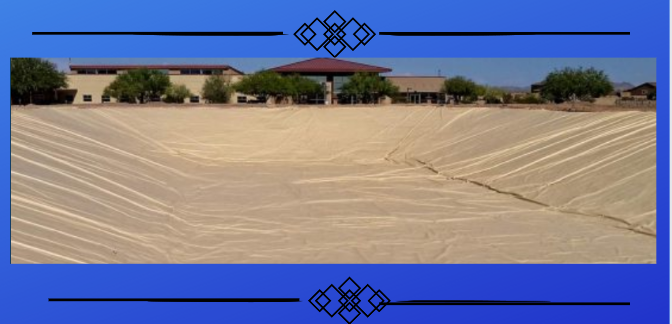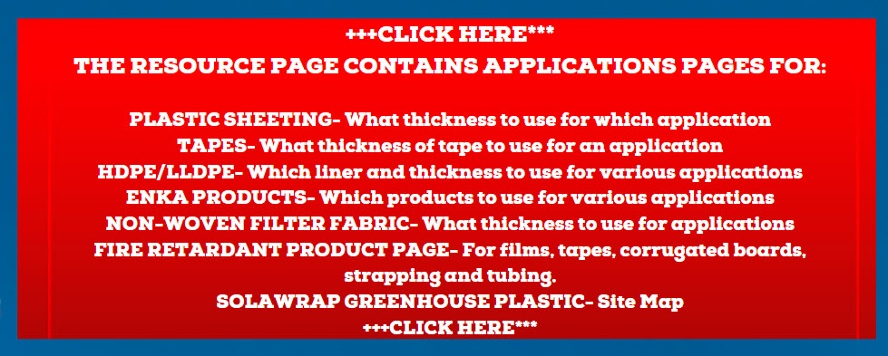Unveiling the Power of Reinforced Polypropylene Liners

Introduction
If you're in search of a reliable and durable liner material for various applications, look no further than Reinforced Polypropylene (RPP). Commonly known as PP, Polypropylene is a versatile synthetic polymer. When it's fortified and used as a liner, it offers exceptional benefits due to its unique properties. In this comprehensive guide, we'll delve into the world of Reinforced Polypropylene liners and why they are an excellent choice for your projects.
Reinforced Polypropylene - Unmatched UV Resistance
One of the standout features of Reinforced Polypropylene is its remarkable resistance to ultraviolet (UV) radiation and weathering. When exposed to sunlight and harsh weather conditions, this material remains highly durable and maintains its integrity over time. In fact, it is backed by an impressive 20-year warranty for UV and weathering resistance, making it a reliable choice for extended use in various applications.
Different Thickness Options
Reinforced Polypropylene liners come in different thickness options, allowing you to choose the one that suits your specific needs. Two common thicknesses are the 45 mil and 36 mil liners:
-
45 mil Reinforced Polypropylene: This thicker option is renowned for its industry-leading 20-year warranty for UV resistance. It's ideal for applications that demand the utmost durability and longevity.
-
36 mil Reinforced Polypropylene: Slightly thinner than the 45 mil version, the 36 mil liner offers a 15-year warranty for UV resistance. It's suitable for applications where a thinner liner can effectively meet containment needs.
Exceptional Impermeability
An essential characteristic of Reinforced Polypropylene is its exceptional impermeability. This means it acts as an effective barrier to prevent the passage of liquids or gases. Additionally, the material exhibits high chemical resistance, making it a preferred choice for applications where containment is crucial.
Applications of Reinforced Polypropylene Liners
Reinforced Polypropylene liners find use in a wide range of applications due to their excellent properties. Here are some common uses for both 45 mil and 36 mil liners:
Applications for 45 mil Reinforced Polypropylene Liner:
- Evaporation Ponds: Used to prevent excessive water loss in ponds.
- Freshwater Ponds: Provides a durable lining for ponds.
- Retention Pond Liners: Ensures water remains where it's needed.
- Nursery Pond Liners: Suitable for nursery water features.
- Reservoirs: Lines reservoirs to prevent seepage.
- Temporary Oil Pit Liners: Offers containment for oil and other liquids.
- Lagoon Liners: Used in various types of lagoons.
- Landfills: Prevents leachate from contaminating soil and groundwater.
- Pond and Lagoon Liners: Contains agricultural and industrial wastewater.
- Reservoirs and Water Storage: Maintains water quality and prevents seepage.
- Mining and Heap Leach Pads: Minimizes environmental impact.
- Secondary Containment: Prevents chemical spills from spreading.
- Waste Treatment Plants: Ideal for high chemical resistance applications.
Applications for 36 mil Reinforced Polypropylene Liners:
- Waste Water Treatment Plants: Offers protection in demanding environments.
- Evaporation Ponds: Controls water loss.
- Freshwater Ponds: Suitable for smaller ponds.
- Retention Pond Liners: Ensures water retention.
- Nursery Pond Liners: Ideal for nursery water features.
- Reservoirs: Prevents seepage in water storage.
- Temporary Oil Pit Liners: Contains oil and other liquids.
- Lagoon Liners: Used in various lagoon applications.
- Erosion Control: Stabilizes slopes and prevents soil erosion.
- Golf Course Water Hazards: Provides water containment for golf course features.
- Rainwater Harvesting Systems: Stores harvested rainwater.
- Green Roofs: Acts as a waterproofing barrier.
Note: The appropriate thickness of the reinforced polypropylene liner depends on the specific requirements of each application. Thicker 45 mil liners are generally recommended for more demanding applications or where increased durability and longevity are needed. On the other hand, the 36 mil liners are suitable for less demanding applications or situations where a thinner liner is sufficient to meet the containment needs.
Choosing the Right Supplier
When considering Reinforced Polypropylene liners, it's crucial to select a reputable supplier. Not all liners are the same, and quality can vary among different products. Investing in a high-quality Reinforced Polypropylene liner ensures that you'll benefit from its outstanding features and extended lifespan.
Conclusion
In conclusion, Reinforced Polypropylene is a premium choice for liners due to its unparalleled UV and weathering resistance, impermeability, and high chemical resistance. Its application in critical containment areas, like waste treatment plants, demonstrates its reliability in demanding environments. When considering this material, always choose a reputable supplier to ensure you get the best performance and longevity for your specific needs. Whether it's a 45 mil or 36 mil liner, Reinforced Polypropylene offers peace of mind for your containment projects, backed by impressive warranties and unmatched performance.



